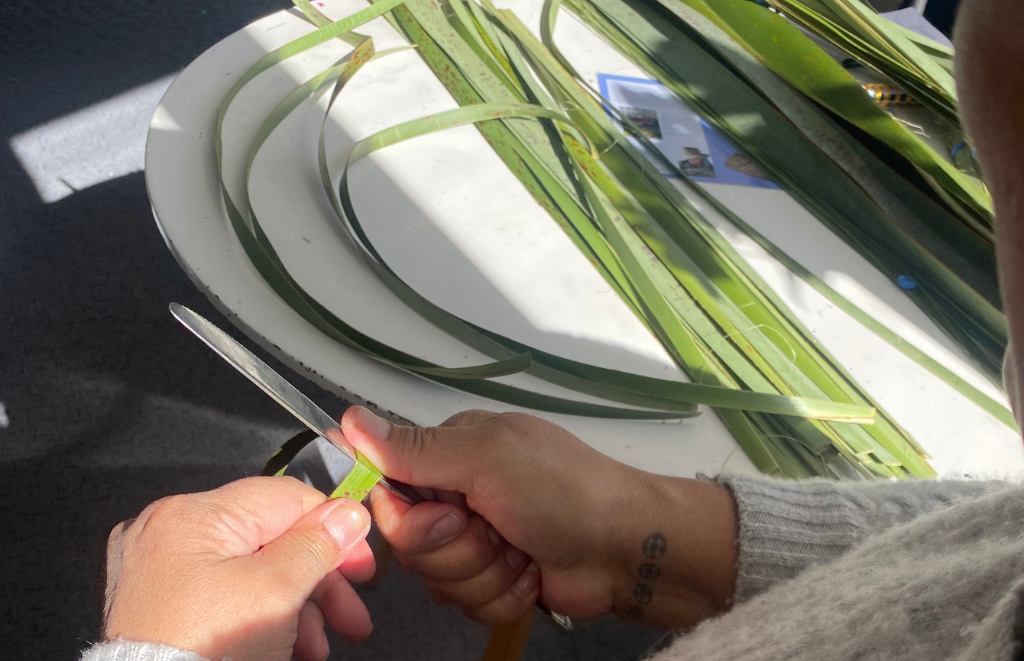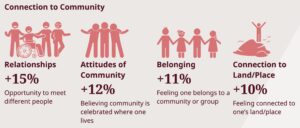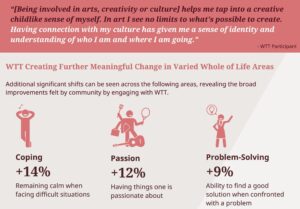Measuring the Immeasurable


But, it can be helpful for us to find ways to share those stories of impact to help shine a light on what happens through the public good of accessible creativity in our communities. This new report is part of that story.
Creative Waikato have again teamed up with social impact measurement experts, Huber Social, to understand the impact of creativity in our communities.
We know that communities with a strong arts, culture and creativity sector are more likely to have a greater sense of place, stronger identity, and higher overall wellbeing. Engagement also leads to individuals who are more in touch with themselves, their land and their cultures, as well as helping to build strong, vibrant and diverse communities. Now, we have research that shows that investing in creatives working in community boosts community wellbeing.
Throughout 2023, the Whiria te Tāngata programme supported ten Waikato creatives to deliver projects in their community. It was funded by Manatū Taonga: The Ministry of Culture and Heritage, and delivered by Creative Waikato. It was shaped by our 2023 findings around How to Support Our Creative Professionals, which identified that our creatives experience less access to essential resources than the wider population. This includes things like access to affordable housing, local employment opportunities and sustainable income. In addition, the research identified three key areas of need across all creative professionals in the Waikato:

Whiria te Tāngata was developed as a way to show what might be possible if we reimagine our models of arts funding in Aotearoa, and invest in the people who make good things happen in our communities. The Whiria te Tāngata programme provided support for ten local artists to develop community-centred projects: Benny Marama, Emiko Sheehan, Fay Purdie-Nicholls, Ifat Vayner-Itzkovitch, Isaiah McIver, Margaret Feeney, Matt Sephton, Melanie Allison, Oriwa Morgan Ward, Sasha McGaughran. Over the year, each artist received a part-time wage supporting 20hrs mahi a week dedicated to the kaupapa, was connected to an industry mentor, and had the support of Creative Waikato, including waananga with one another, guest speakers, and the dedicated support and guidance of project Lead, Leafā Wilson.
Creative Waikato worked with Huber Social to undertake original research into the impact of Whiria te Tāngata for the communities engaged with the programme. Working with the expert team at Huber Social allows us to gather robust and holistic findings which are focused around wellbeing. We undertook research which welcomed all participants, and included four deep-dives, focused around: connection to culture through storytelling for migrant and cross-cultural communities, connection within geographically-isolated communities, connection to culture and child-rearing for māmā, and connection to Māori and Pasifika culture for Moana Pasifika youth.
Thanks to the support and sharing of our artists, mentors, and communities, we are now able to share a report into the social impact of the Whiria te Tangata Project. The full report weaves together stories and written feedback, with facts and figures. The findings are really exciting, and we want to provide you with some tasters here:



Some other details and insights:
The full report is free to air, and ready for you to check out.
If you want to talk more about it, kōrero mai, please get in touch.